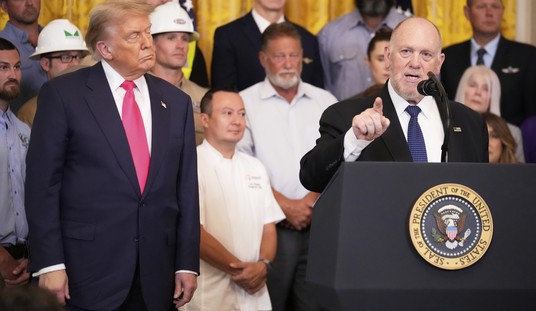The flat tax is getting a lot of attention—and a lot of criticism—as an increasing number of Republican presidential candidates embrace the idea in some form or another. [mc_name name=’Sen. Rand Paul (R-KY)’ chamber=’senate’ mcid=’P000603′ ], Donald Trump, Ben Carson, and [mc_name name=’Sen. Ted Cruz (R-TX)’ chamber=’senate’ mcid=’C001098′ ] have all proposed their own variations on the idea, with an emphasis on simplicity that seems like common sense to most people.
Right now, the staggering complexity of the 75,000 page tax code is baffling to anyone without years of formal training in tax law, and even the experts are frequently stumped. Every year, Americans spend $37 billion and 3.24 billion hours simply complying with tax laws. Imagine if those resources could be freed up for more productive use!
This is part of the intuitive appeal of a flat tax. Eliminate loopholes and deductions, and charge everybody the same, predictable rate, and what has historically been a months-long nightmare for many taxpayers could become as simple as mailing a postcard.
Another key argument in favor of a flat tax is putting an end to social engineering, and restore the code to its original purpose of collecting revenue. Right now, we have government trying to influence a wide variety of behavior through the wholly inappropriate means of the tax code. Taxes try to “nudge” individuals and businesses alike into doing things the government thinks we ought to do, and deter us from things of which the government disapproves. It was never supposed to be this way. Apart from the ethical issues surrounding official sanction or censure of otherwise legal activities using taxes, the result of this policy has been a hopeless tangle of spaghetti-like exemptions, rebates, and surcharges that is next to impossible to navigate.
Taxes should be used for one thing and one thing only, funding the government, which brings us to one of the most persistent criticisms of the flat tax model: how to pay for it. Using the static model familiar to most tax analysts, the assumption is that if you cut taxes by 10 percent, you will get 10 percent less revenue. Under this type of analysis, a flat tax would result in a huge loss of revenue. In the real world, however, people respond to incentives and alter their behavior based on the taxes they will expect to pay. If a flat tax makes it easier to start a business or invest in new technologies, the revenue loss will be offset, at least partially. Indeed, in many cases tax cuts can actually result in more revenue, an insight most famously demonstrated to by economist Art Laffer.
We can see this by looking at history. In 1964, President Lyndon Johnson signed into law a major tax cut proposed by John F. Kennedy before his death. The Revenue Act of 1964 cut individual income tax rates by approximately 20 percentage points. Corporate tax rates were also reduced by a more modest figure. Under a static analysis, you would expect to see dramatically reduced revenues, but in fact we see the opposite.
The following chart was created from data from the Office of Management and Budget, and shows inflation-adjusted revenue in billions of dollars from five years before the tax cut until five years after. What we see is that the average annual growth in revenue from 1960 to 1964 was 5.4 percent. After the tax cut, from 1965 to 1969, that average was 7.3 percent. Of course, we can’t say that the tax cut directly caused the increase—a large number of factors influence revenue, including population growth, natural disasters, and any external event that affects people’s lives—but what we can say is that there was certainly no precipitous drop in revenue collection.
The Kennedy tax cut was no anomaly. The same thing happened under Reagan and the Tax Reform Act of 1986, which again cut tax rates significantly, and simplified the code by consolidating 15 separate rates into four. The package was supposed to be revenue neutral, but again, the rate of growth in tax revenues increased. Before the cuts, revenue growth was 0.7 percent annually, and after it was 2.9 percent.
Both logic and historical data indicate that you can simplify the tax code while cutting rates without bankrupting the country. The incredible force of economic growth that occurs when taxes are simple and predictable can be more valuable than trying to squeeze people for more of their dollars. The fact that so many presidential candidates are seriously talking about a flat tax should give us hope that America may soon return to an era of robust growth, and broad economic prosperity.















Join the conversation as a VIP Member